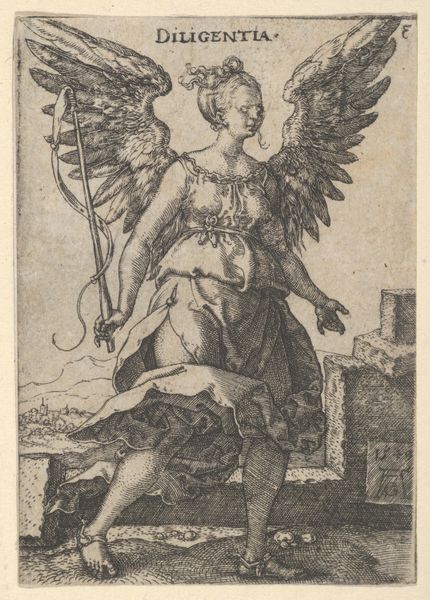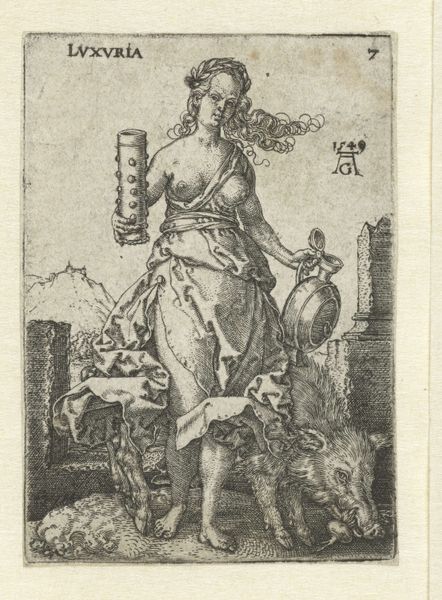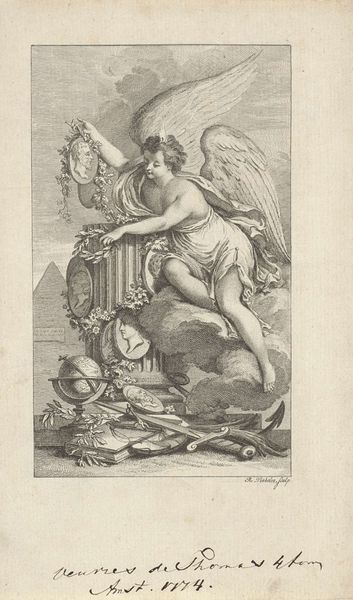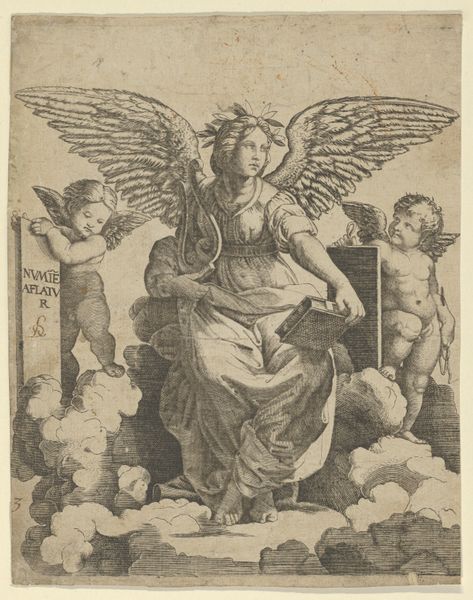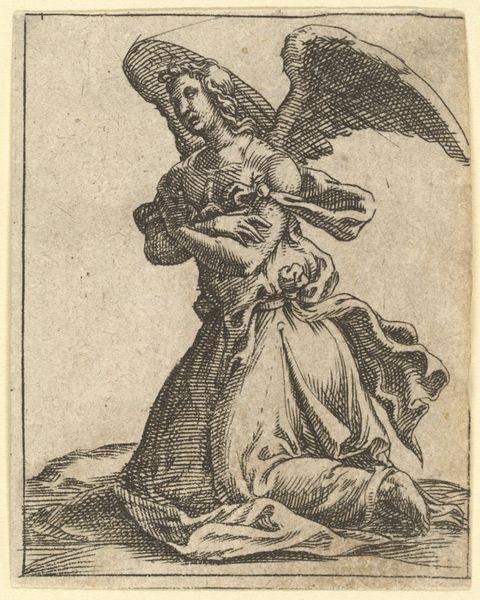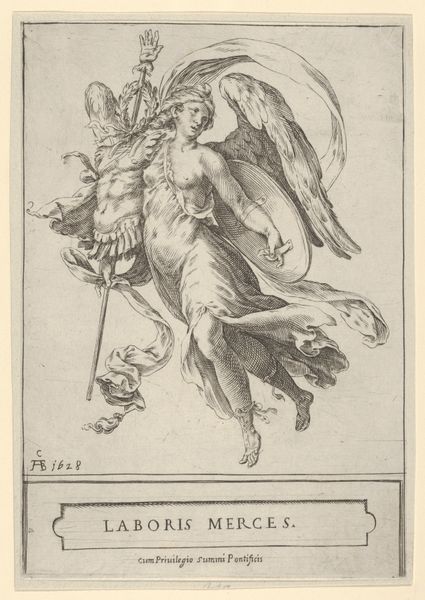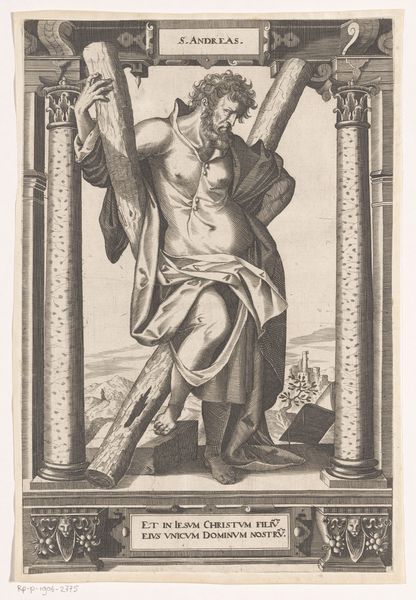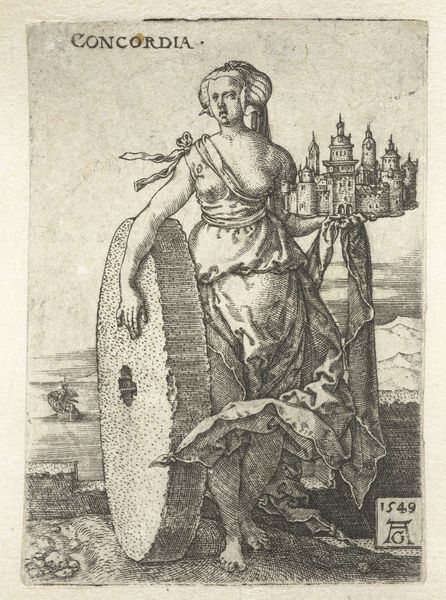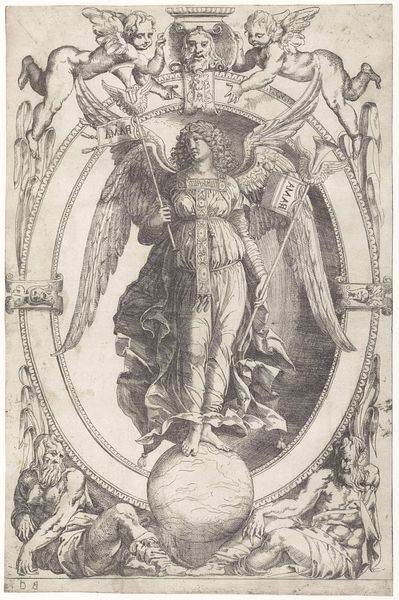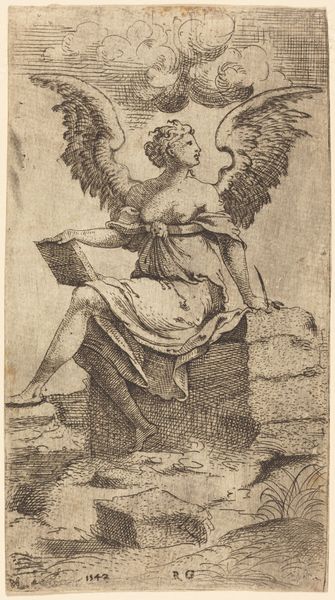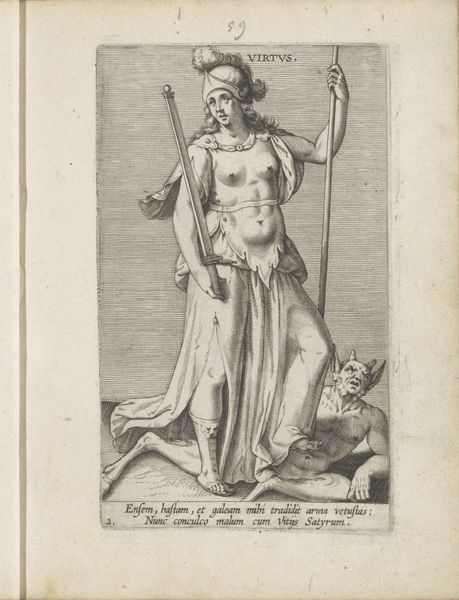
print, engraving
# print
#
pen illustration
#
figuration
#
history-painting
#
northern-renaissance
#
engraving
Dimensions: height 251 mm, width 167 mm
Copyright: Rijks Museum: Open Domain
Curator: Looking at "The Triumph of Christianity," an engraving made sometime between 1507 and 1553, our attention is drawn to a figure standing in confident ascendancy. Editor: There’s an immediacy to the engraving; the crisp lines cut such a strong contrast. You can almost feel the pressure of the engraver’s hand. The composition strikes me as surprisingly powerful despite its modest scale. Curator: Created by Cornelis Anthonisz, this work is laden with symbolic power; it illustrates the dominance of Christianity over the remnants of classical antiquity, a recurring theme during the Northern Renaissance. Editor: So, it's the conquering figure holding up the…winged solar deity while stepping on a snake. What about the artist's choice of material? We have pen and ink – a readily available, relatively inexpensive medium, yet with the skilled craftsman, you get astonishing detail. What does that accessibility say about the audience Anthonisz was aiming for? Curator: That is a crucial consideration. Prints like these circulated widely and played a crucial role in shaping public sentiment, especially during religious upheavals of the era. Its availability made it a potent vehicle for religious and political statements. The architecture is presented as being in decline – ruins that show the past now replaced. Editor: You know, the method of reproduction, printing itself, allows these ideals and statements to permeate society and possibly disrupt the current religious views. Also, the craftsmanship required is incredibly complex. Do we know anything about the workshops where this took place? Who trained these artisans, and who employed them? Curator: Indeed, this print reflects a society undergoing seismic shifts in religious thought. Workshops played a vital role in spreading these messages; prints had propagandistic intentions alongside religious functions. Editor: So, "Triumph of Christianity" is a fascinating study in contrasts – between high and low art, ruin and progress, ancient faith and current power dynamics... Curator: Absolutely, it shows how social currents affect even an engraved line on paper. Thanks to printmaking’s accessible materials, "The Triumph of Christianity" allowed new interpretations to flourish.
Comments
No comments
Be the first to comment and join the conversation on the ultimate creative platform.
